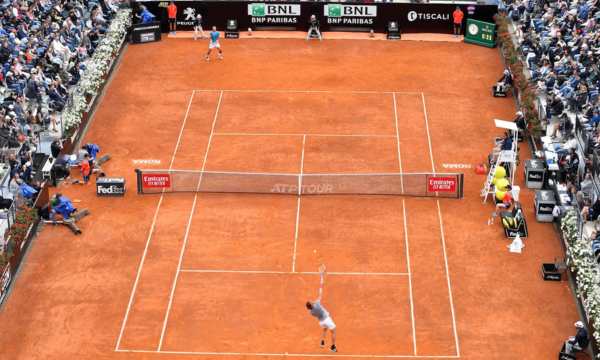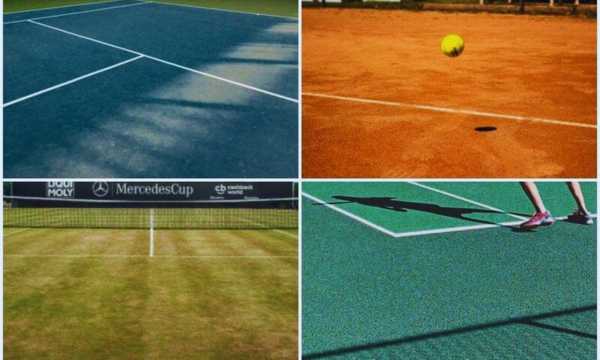Tennis Masters Guide: Understanding the ATP/WTA Series
The tennis Masters represent the second most prestigious tier in the professional circuit, right after the Grand Slams.
Ad
For true fans of the sport, understanding the importance and specifics of these tournaments is essential to fully appreciate the season.
These events bring together the best players in the world in intense competitions that distribute significant points for the rankings.
If you want to deepen your knowledge of tennis or simply understand better the competitions you follow, this comprehensive guide to the Masters was made especially for you.
What are the Tennis Masters?
These tournaments are considered the elite in professional tennis, regarded as the second most prestigious category after the Grand Slams.
In the men’s ATP circuit, they are known as Masters 1000, reflecting the number of points the champion receives for the world ranking. For women, the WTA classifies its main tournaments as WTA 1000, following a similar format to the men’s.
These events emerged from the need to create an intermediate category between the Grand Slams and regular tournaments.
These tournaments were officially structured in the 1990s to standardize the main tournaments on the tennis calendar. Before that, there were important tournaments but without a unified classification like the one we know today.
Unlike smaller tournaments, these events stand out for their extended format, usually lasting 8 to 10 days.
The Importance of These Tournaments in the Circuit
The tournaments serve as fundamental pillars in the tennis calendar, significantly shaping the season and the careers of athletes.
Throughout the year, these events serve as critical markers to evaluate players’ performances. Winning one represents an extremely significant achievement in any professional tennis player’s career.
The strategic distribution of the tournaments throughout the season creates a rhythm for the circuit, preparing players for the Grand Slams. These events often occur in the weeks leading up to the majors, serving as ideal preparation.
The points accumulated in these matches are crucial for the world ranking, directly affecting the seedings in future tournaments.
Consistency throughout the year is often a better indicator of a player’s overall performance than isolated results. For many emerging athletes, winning a title represents the first major breakthrough in their careers.
Players like Alexander Zverev and Daniil Medvedev made their names on the tennis scene with Masters victories before achieving Grand Slam successes.
Get to Know Each ATP/WTA Master Tournament
The annual calendar includes nine tournaments in the men’s circuit and equivalent events in the women’s, each with its unique identity.
The first tournament of the season usually takes place in Indian Wells, California, known as the “fifth Grand Slam” due to its magnitude.
Next comes Miami, completing the so-called “Sunshine Double” – winning both consecutively is a rare feat.
The European clay season brings the tournaments of Monte Carlo, Madrid, and Rome, which serve as essential preparation for Roland Garros. Montreal and Cincinnati host the North American hard court Masters leading up to the US Open.
The Asian circuit in Shanghai is a relatively recent event but already established. Paris-Bercy closes the calendar as the last major event before the ATP Finals.
Each tournament has its peculiarities that directly affect the playing style. The Masters in Europe are known for their centenary traditions, while the North American ones stand out for their modernity and faster playing conditions.

Rome-Masters-1000WTA-Premier-(Source-Google)
From Hard Court to Clay: The Variety of Challenges
The tournaments offer a fascinating diversity of surfaces that test players’ versatility throughout the season.
Five of the nine tournaments are played on hard courts, three on clay, and Shanghai alternates between indoor and outdoor. This balanced distribution challenges athletes to adapt their playing styles as they switch surfaces.
The clay courts of Monte Carlo, Madrid, and Rome have distinct characteristics.
Monte Carlo features more traditional and slower clay, while Madrid, due to its altitude, offers faster conditions. Rome, with its heavier clay, favors players with greater physical power.
Among the hard courts, the variations are also significant. Indian Wells is known for having one of the slowest hard courts on the circuit, while Cincinnati features one of the fastest.
These technical differences shape the calendar and create opportunities for specialists on each surface.
The ability to adapt between these different tournaments is a determining factor for success in modern tennis.
Players like Novak Djokovic and Andy Murray gained notoriety for their ability to win Masters on all surfaces, demonstrating exceptional versatility.
Who are the Greatest Title Collectors?
Novak Djokovic leads as the greatest champion in history, with an impressive 40 titles in this category. He also achieved the “Golden Masters,” which means winning all nine tournaments at least once.
Rafael Nadal follows closely, with an impressive 36 titles, including a record 26 Masters on clay courts. This extraordinary dominance on clay surfaces established Nadal as the “King of Clay.”
Roger Federer, with 28 titles, completes the trio of legends who revolutionized the statistics of these tournaments.
Before the era of the “Big Three,” Andre Agassi held the record with 17 titles, a mark that seemed unattainable at the time.
This contrast illustrates how much Djokovic, Nadal, and Federer have raised the bar of excellence in modern tennis.
In the women’s circuit, Serena Williams dominates the statistics with 23 titles in events equivalent to the tournaments. Steffi Graf and Martina Navratilova also built impressive legacies in these elite tournaments.
Among current players, Simona Halep and Petra Kvitova stand out as multiple champions of these events.

Elite-tennis-players-(Source-Google)
The Weight of the Masters in the Race to the Finals
The Masters tournaments represent crucial components in the qualification for the ATP Finals and WTA Finals, the prestigious year-end events.
With 1000 points at stake for the champions, the tournaments offer the second highest points on the circuit, behind only the Grand Slams.
This generous distribution of points can quickly alter the “Race” – the annual race for qualification.
To qualify for the Finals, players need to accumulate points consistently throughout the year, making performance in these matches practically mandatory.
It is rare for an athlete to qualify for the year-end event without significant results in at least some of these tournaments throughout the year.
Players who find good form in the second-half Masters can secure a last-minute qualification for the tournament that gathers only the top eight.
Historically, the Finals champions have usually won multiple titles in the same season.
Masters vs. Grand Slams: Understanding the Main Differences
While the Grand Slams represent the pinnacle of tennis with their centenary tradition, the Masters offer their own distinctive format of excellence.
These tournaments are played best of three sets in the men’s, unlike the five sets of the Grand Slams. This configuration creates a more intense pace and leaves less room for recovery during matches.
The calendar also differs significantly, with four Grand Slams annually compared to the nine tournaments. While winning a Grand Slam can define a career, consistency in these other tournaments often defines the best players of each season.
The mandatory participation drastically differentiates these two major tennis championships.
While players can choose to skip certain Grand Slams without penalties in the ranking, missing a Masters without valid justification has consequences. This policy ensures that the audience always sees the best athletes competing.
Remember Unforgettable Moments in the Masters
The Masters have produced some of the most memorable moments in modern tennis history. The 2006 Rome final between Federer and Nadal, lasting five hours and with match points saved, is considered one of the greatest matches ever played.
This clay epic demonstrated why these tournaments often match the Grand Slams in quality and excitement. Additionally, the emergence of new champions often happens in these matches before the Grand Slams.
Alexander Zverev’s victory over Djokovic in the 2017 Rome final announced the arrival of the next generation.
Moments like this show how the Masters serve as a platform for future champions to test their skills against the established elite.
In Cincinnati in 2013, John Isner defeated Djokovic, Del Potro, and Federer consecutively, illustrating how even players outside the top 10 can find magical weeks in these tournaments.
These surprising campaigns add unpredictability and excitement to the circuit.
These tournaments have also witnessed historic records being broken. When Djokovic completed his “Golden Masters” in Cincinnati 2018, winning the only tournament missing from his collection, he set an unprecedented milestone in the sport.
Final Considerations
The Masters tournaments represent the perfect balance between the exclusivity of the Grand Slams and the regularity of weekly tennis events.
Understanding the importance of these tournaments significantly enriches the experience of any fan following the season.
From scattered tournaments without a unified classification, they have transformed into a cohesive series that serves as the backbone of the tennis calendar. This structure benefits players, sponsors, and fans, providing consistent and predictable excellence.
While the Grand Slams will always maintain their special status, these tournaments have earned their own prominent place in the hierarchy of tennis.
The future will certainly bring more unforgettable moments, broken records, and inspiring stories on these privileged stages of world tennis.
FAQ
What is the oldest Masters tournament?
Is it possible for a player to win all the Masters in a single season?
What is the “Sunshine Double” mentioned in the text?
Why do some players sometimes withdraw from the Masters even though they are mandatory?
What is the tiebreak criterion for ATP Finals qualification?
 Tennis Courts: Understand the Advantage of Each Surface
Tennis Courts: Understand the Advantage of Each Surface
Believe it, tennis courts can completely transform your game! Keep reading! Ad Have you noticed how the same match can feel completely different depending on where […]
Keep reading Top Apps to Watch Tennis Live on Android and iPhone
Top Apps to Watch Tennis Live on Android and iPhone
Watching tennis live on a phone has never felt so smooth, and the last month brought meaningful upgrades that make it even better. Ad With refined […]
Keep reading Learn How to Improve Your Tennis Serves with These Tips!
Learn How to Improve Your Tennis Serves with These Tips!
A reliable tennis serve multiplies your options on every point. It sets the tone, opens angles, and keeps opponents guessing. Ad Today, modern insights go beyond […]
Keep reading